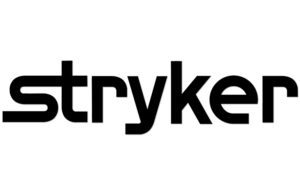 Stryker
(NYSE: SYK)
shares fell slightly this morning on third-quarter results that topped the consensus forecast.
Stryker
(NYSE: SYK)
shares fell slightly this morning on third-quarter results that topped the consensus forecast.
Shares of SYK dipped 1.8% at $273.22 apiece in early-morning trading today. MassDevice’s MedTech 100 Index — which includes stocks of the world’s largest medical device companies — rose 1.4%.
The Kalamazoo, Michigan-based company posted profits of $692 million, equaling $1.80 per share. It recorded sales of $4.91 billion for the three months ended Sept. 30, 2023.
Stryker reported a 15.2% bottom-line slide despite sales growth of 9.6%.
Adjusted to exclude one-time items, earnings per share totaled $2.46. That landed 3¢ ahead of expectations on Wall Street, where analysts projected sales of $4.86 billion.
The orthopedic giant reported MedSurg and Neurotechnology sales of $2.9 billion, rising 10.5% year-over-year. Stryker attributed some of that growth to increased unit volume and higher prices.
Orthopedics and Spine net sales of $2.1 billion marked an 8.4% year-over-year rise. The company reported increased unit volume partially offset by lower prices.
“We delivered another quarter of strong organic sales growth and continued margin expansion,” said Kevin A. Lobo, chair and CEO. “The positive momentum in our business remains intact, including a strong procedural environment and our supercycle of innovation.”
Stryker narrowed its guidance to reflect more confidence in the lower end of its revenue totals. It now projects between 10% and 10.5% growth, having previously forecast 9.5% to 10.5%. The company also noted that exchange rates should unfavorably impact sales by about 0.6% if they hold near their current levels.
Based on the first nine months of the year, Stryker now expects adjusted EPS to range between $10.35 and $10.45. It previously projected between $10.25 and $10.45, again raising the low end of its guidance.
No GLP-1 impact
On the company’s third-quarter earnings call, Lobo opted to begin by quashing concerns over GLP-1s and their impact on Stryker’s business.
GLP-1 receptor agonists, like Ozempic and Wegovy, provide therapy for diabetes and can lead to weight loss. Beyond impacting the diabetes industry, questions have arisen over their overall impact on medtech. Intuitive Surgical, for instance, saw bariatric procedure declines due to weight loss.
At last month’s The MedTech Conference, Lobo called the increased focus on GLP-1 “hysteria.” He labeled the latest craze as an overreaction. Lisa Kloes, the GM and VP of Stryker’s knee business, recently told Medical Design & Outsourcing that the company doesn’t see GLP-1s negatively impacting the joint replacement implant business.
“Yes, there’s there’s a lot of noise out there, GLP-1s being one of them,” Lobo said in Anaheim. “There’s noise. But the underlying business is chugging along.”
On the earnings call, Lobo addressed the concerns and what he considers misunderstandings.
“Our knee business is not at risk for a slowdown,” he said. “There is an oversimplification taking place as it relates to the relationship between weight and knee replacements. This ignores the more important aspects of activity level and genetics. We are, in fact, optimistic about the positive impacts of these drugs in both the short term and the long term.
“In the short term, it will help to make ineligible people eligible for surgery sooner. And in the long term, it will likely lead to more surgery as people increase their activity levels. With that said, the rate and persistence of adoption of these medicines is still a large unknown as there are significant barriers to this taking place.”
The analysts’ view on Stryker
BTIG analysts Ryan Zimmerman and Iseult McMahon maintained their “Buy” rating for Stryker.
Specifically, the analysts say they “take solace” in Lobo’s effort to disavow concerns around GLP-1s. They believe “going on the offensive” can help Stryker as a “leading voice in the industry.”
The analysts also expect more commentary at Stryker’s upcoming Analyst Day, focused on margin expansion. They believe, based on these results, that Stryker looks poised to “get back to 2019 [operating margin] levels.”
“The big question will be FY24 growth. With [management] noting continued robust orthopedic markets through 2024 offset by continued staffing pressures at many hospitals, it’s likely that [Stryker] can grow at or above the high-end of MedTech but it’s difficult to know exactly where MedTech (as an industry) can grow in 2024,” the analysts said.
Medical Design & Outsourcing: Why Stryker and analysts say GLP-1 weight loss drugs could boost joint replacements

